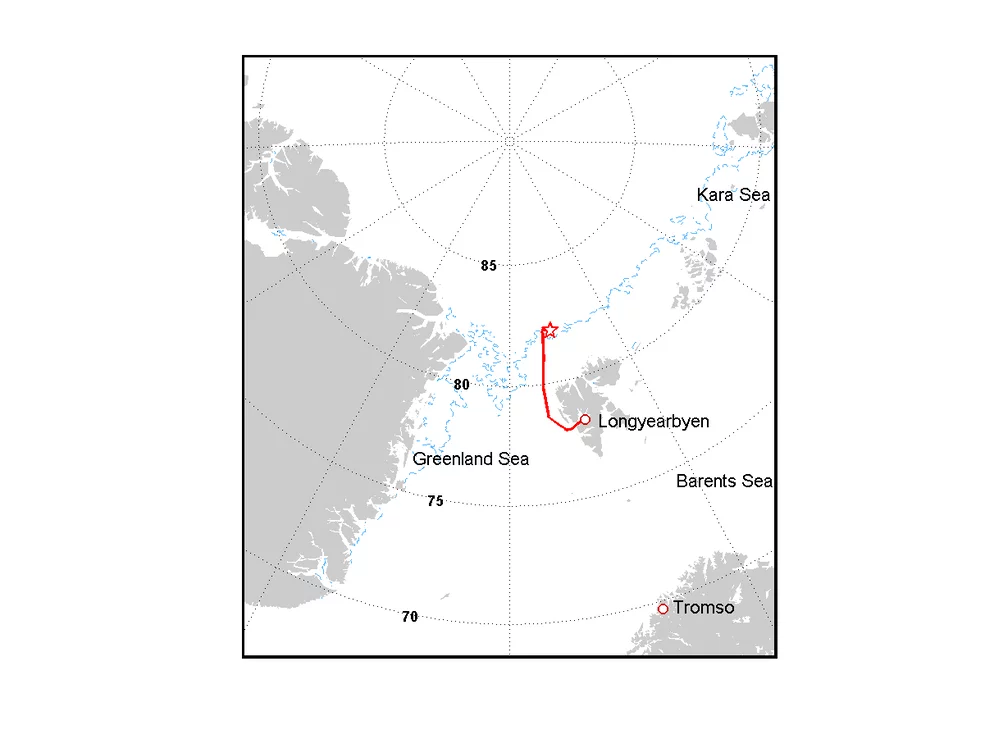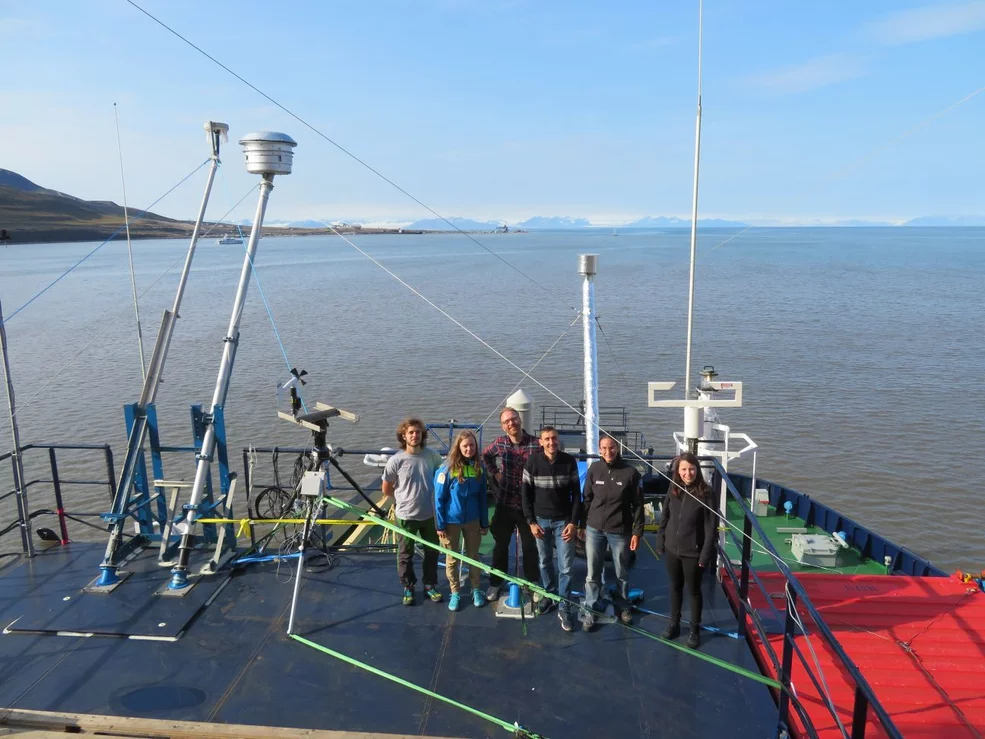Current position: 82° 12′ N, 10° 24′ O (marginal ice zone)
Heading to the Marginal Ice Zone

On 1 August, 15:00 CEST, we lift the anchor in the Fjord of Longyearbyen (78° N, 16° E) and set course to the north. Before the Oden starts rolling in the open ocean, it has a rather flat bottom which is designed for ice breaking, the “online aerosol group” from the University of Stockholm and PSI says farewell from the roofs of their containers.

After 58 hours, we reach the marginal ice zone (MIZ), our first target area, where we have a 24 hour station. The measurements in the MIZ serve as reference, or even counterpoint, to the conditions we hope to encounter in the high Arctic pack ice. First, the ship stops for the oceanographers to take water samples with the CTD (Conductivity, Temperature, Depth: a rosette of bottles that is lowered into the ocean). Then, we slowly move about turning the ship against the wind in order to avoid sampling ship exhaust. Particle number concentrations range roughly between 50 and 200 per cubic centimeter. The lowest concentrations occur when the fog that started creeping in precipitated.
These conditions, described meticulously by the instruments of the boundary layer meteorologists, are a perfect test for our various types of aerosol sampling inlets: the total inlet which collects aerosol particles and droplets, the interstitial inlet which selects particles that have not formed droplets, and the counter flow virtual impactor which selects only particles that have formed droplets. The inlets pass the test and we are content with the set-up and station. During the same 24 hours the “offline aerosol group” collected a large number of filters on which they perform chemical analyses (e.g., determination of major ions and organic compounds) and ice nucleation tests. Most other projects have research questions targeted at the conditions in the high North that involve setting up equipment on the ice. Those groups use the time to sort out their equipment to be ready in the next couple of days, when we break the pack ice and they might have a chance to get off the ship with the helicopter.